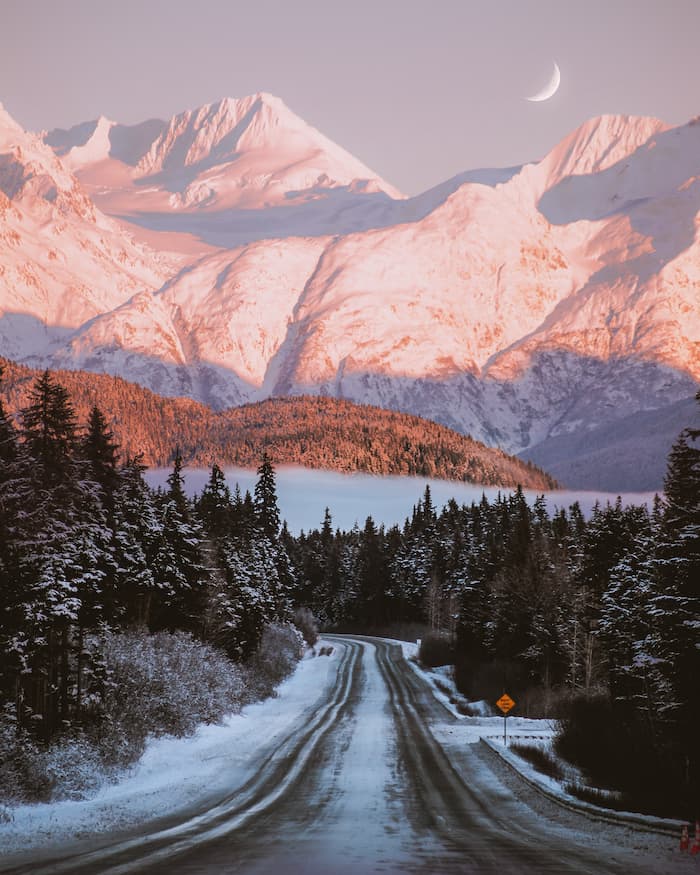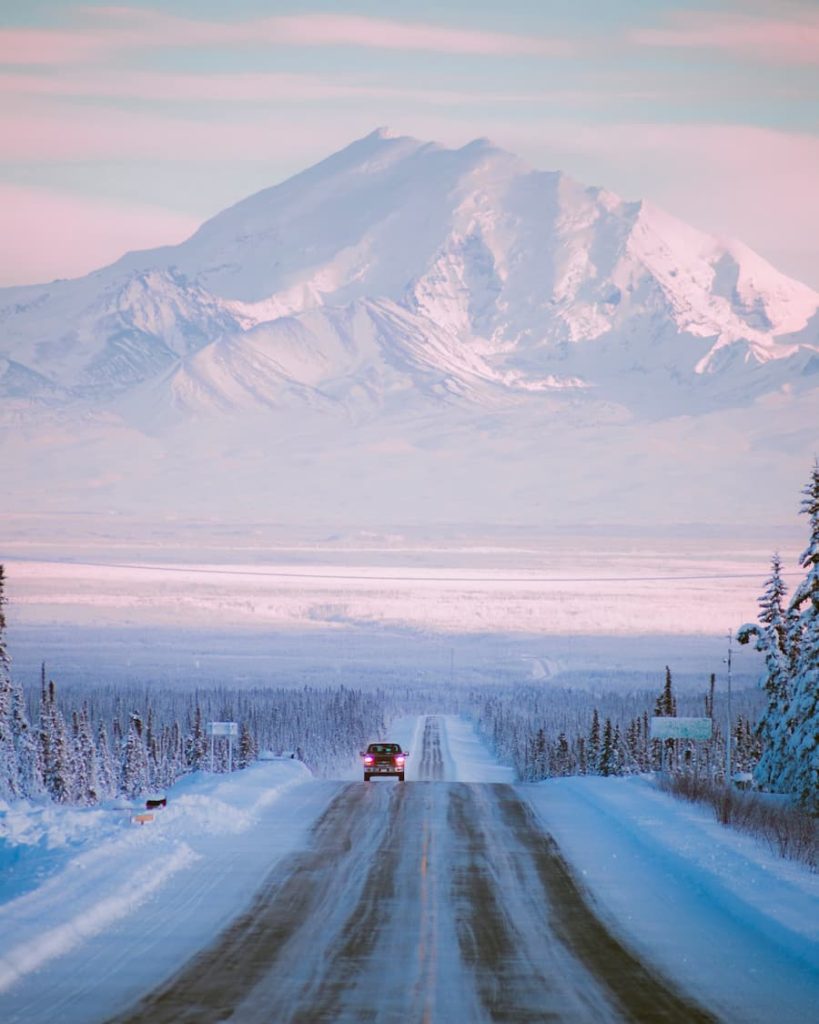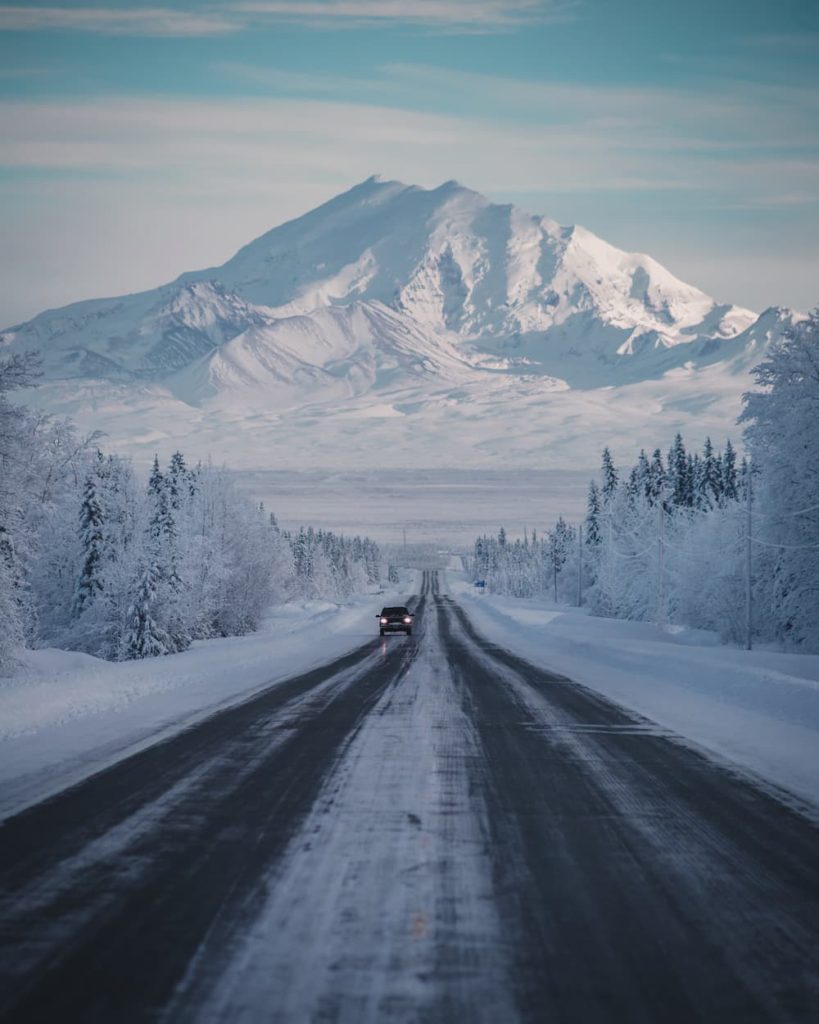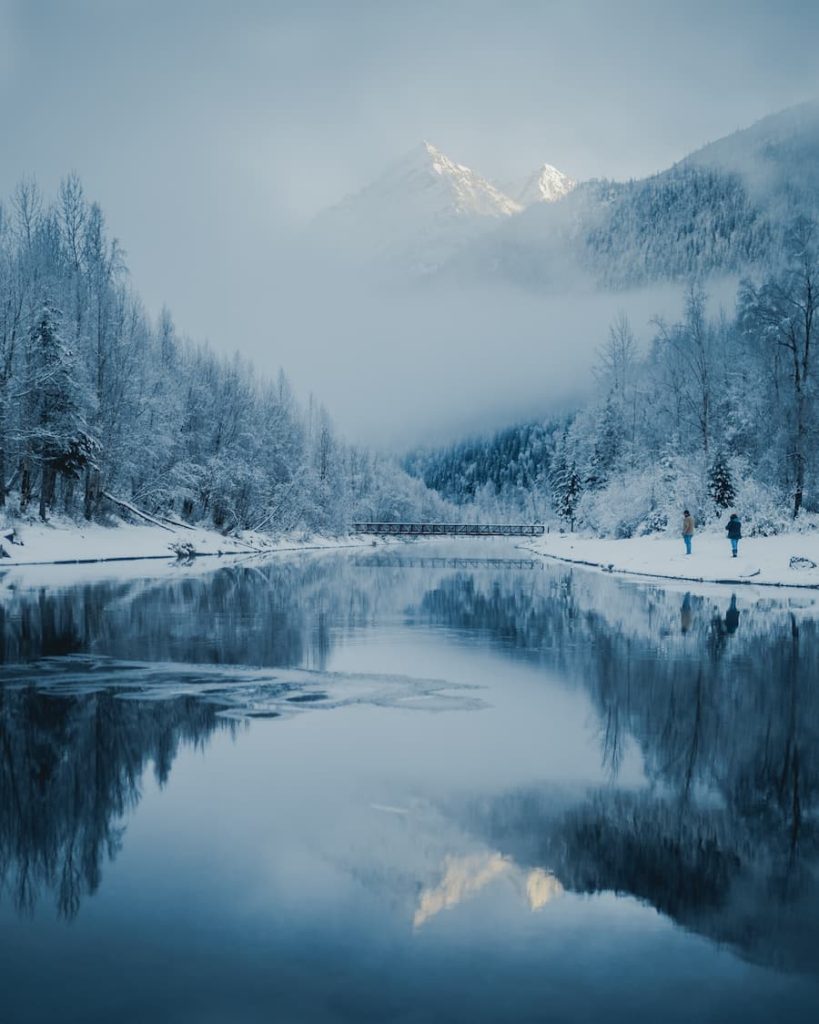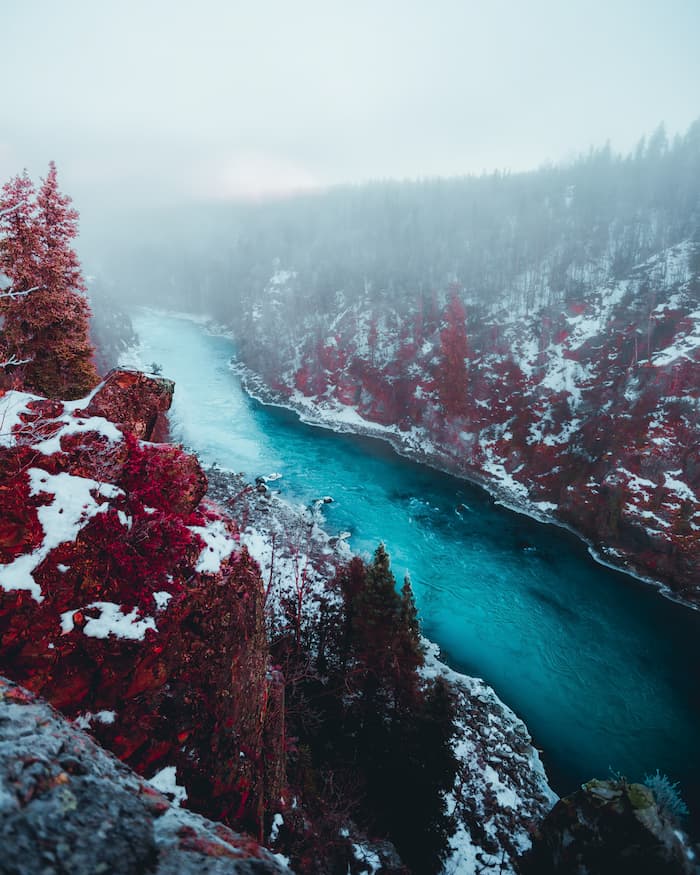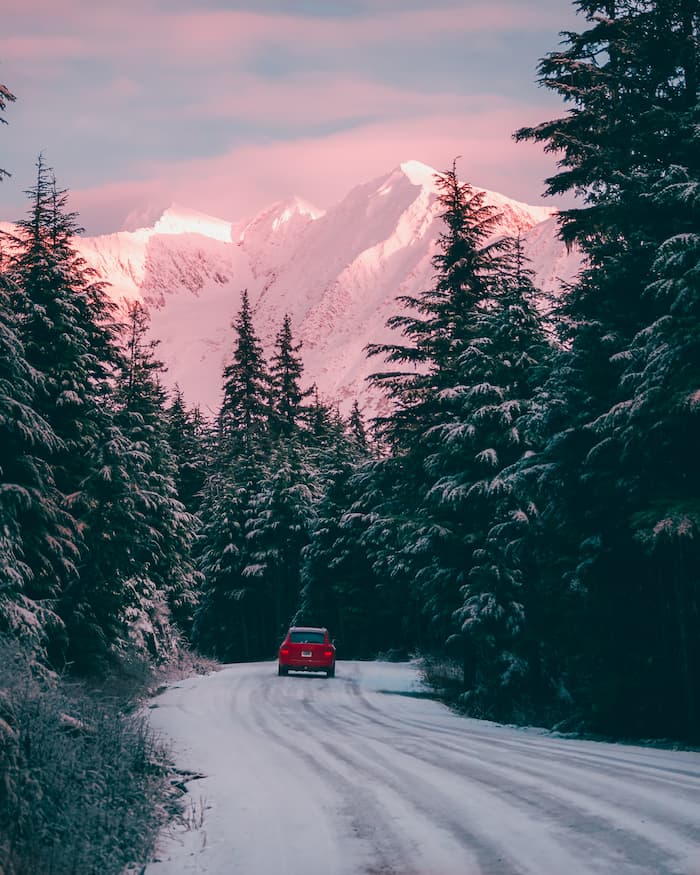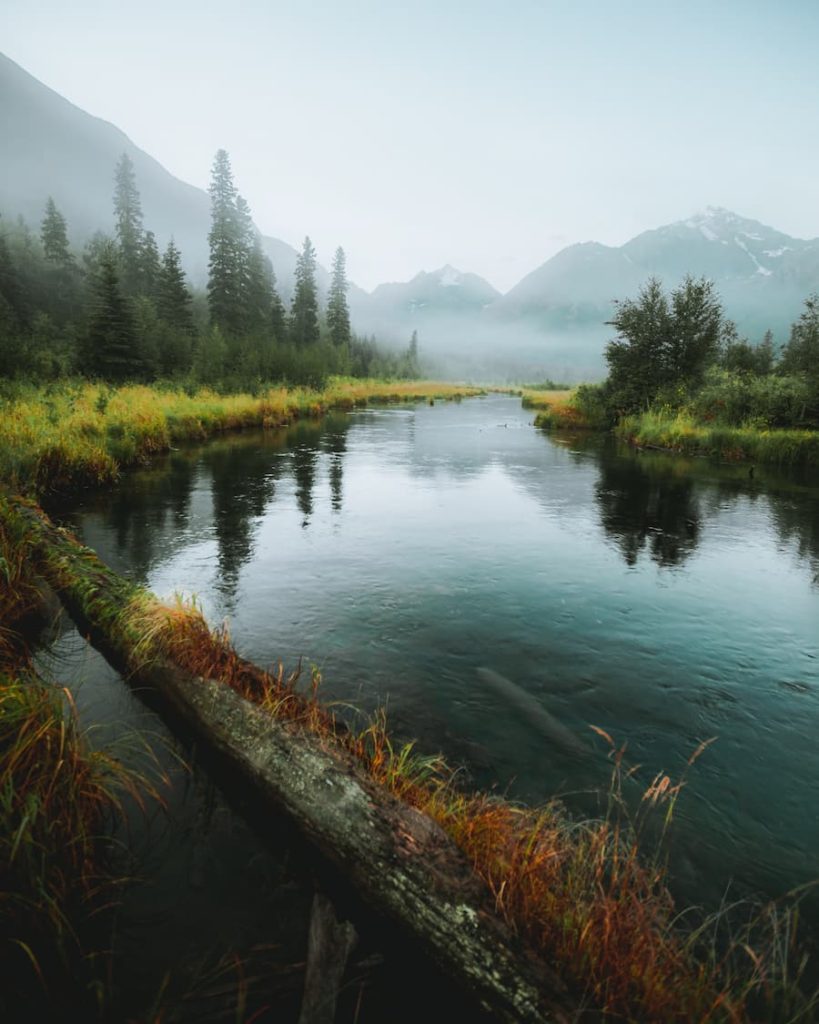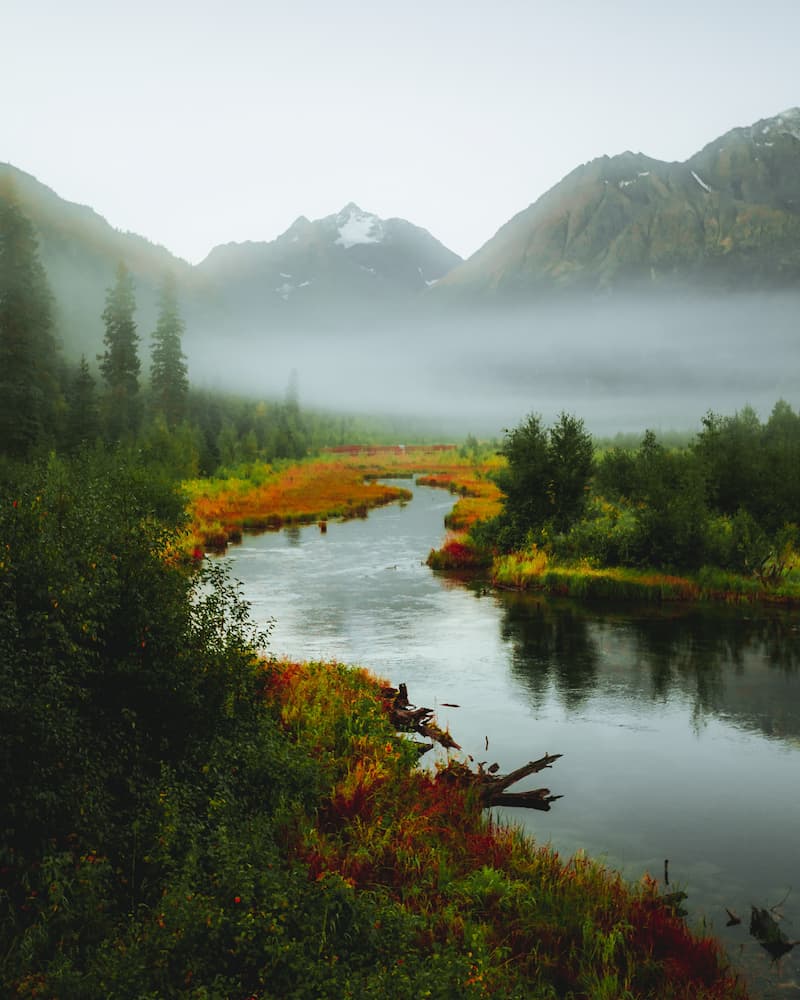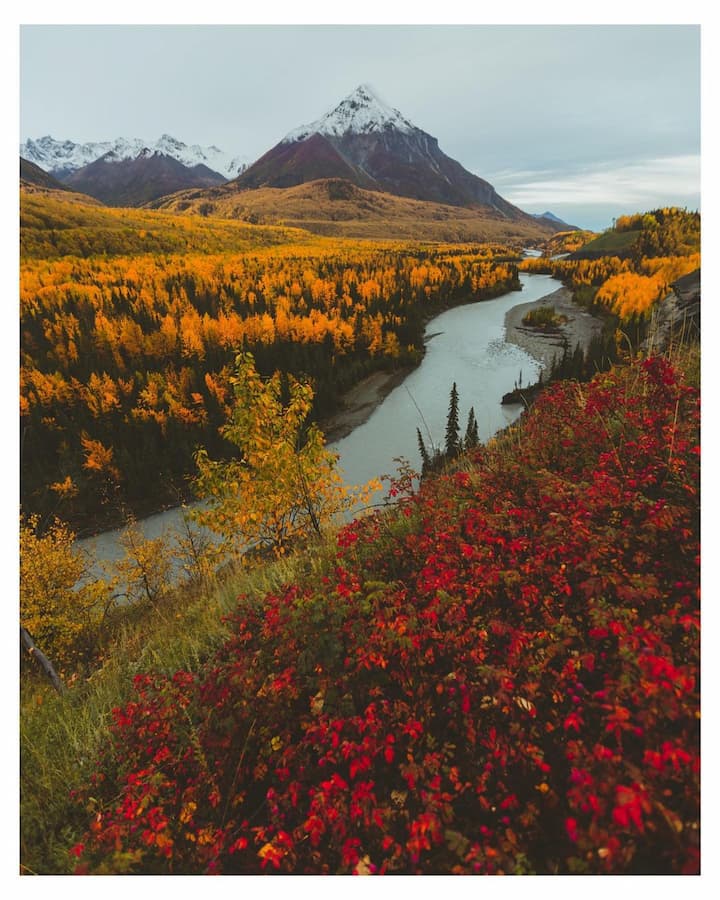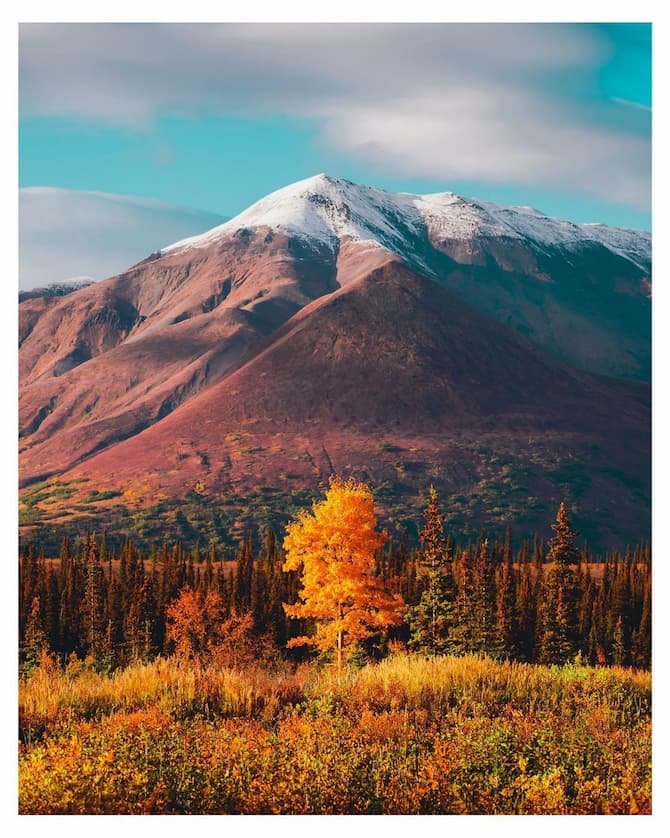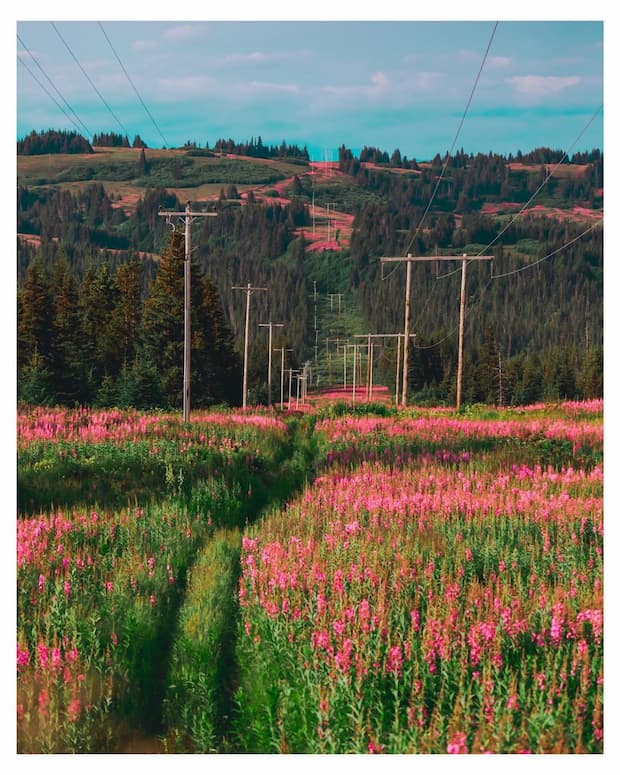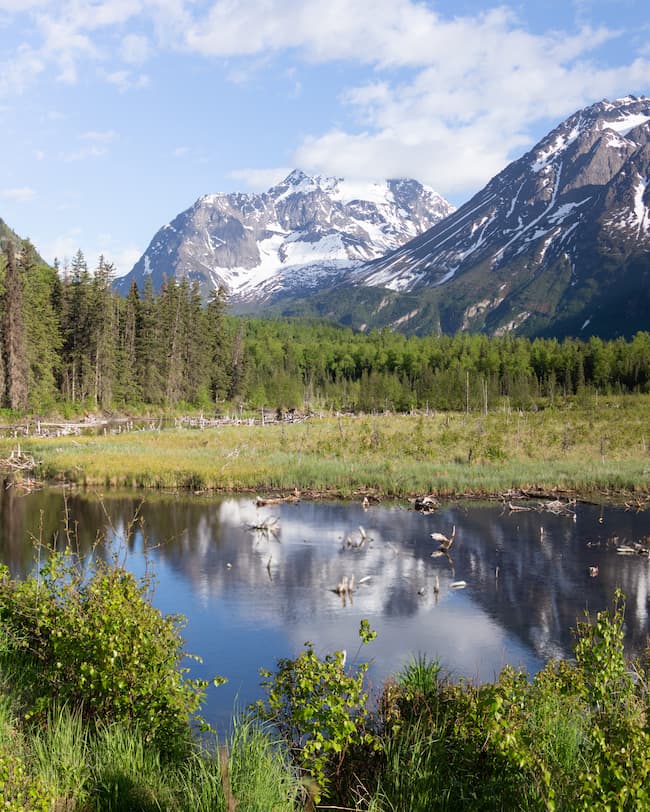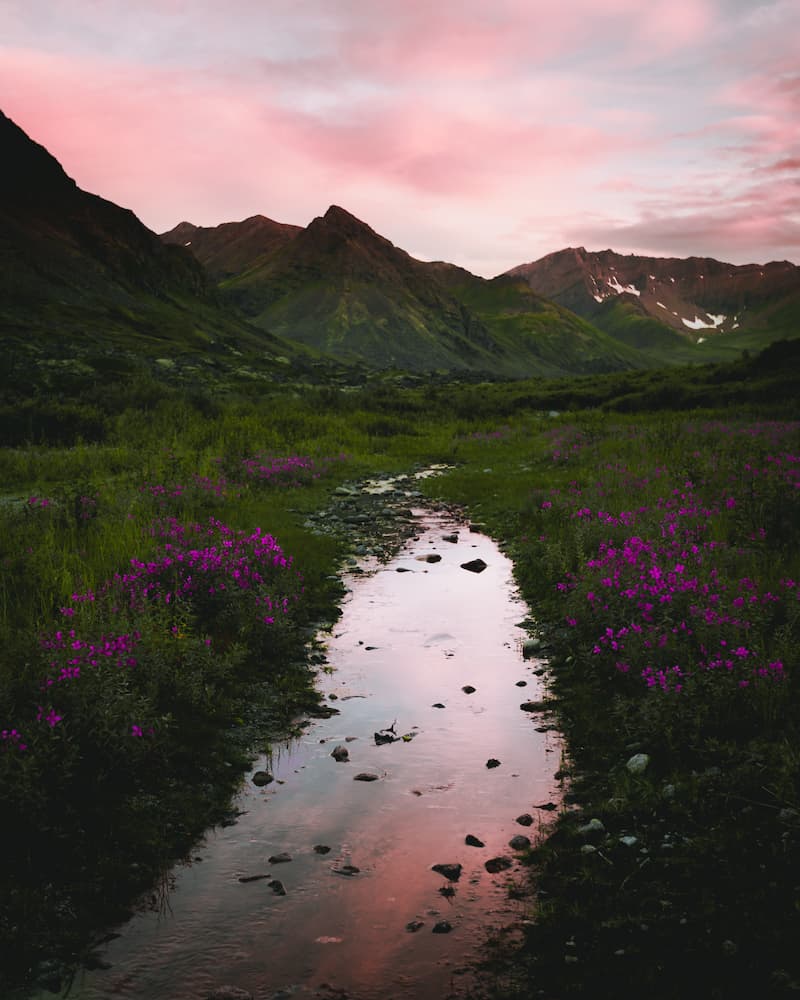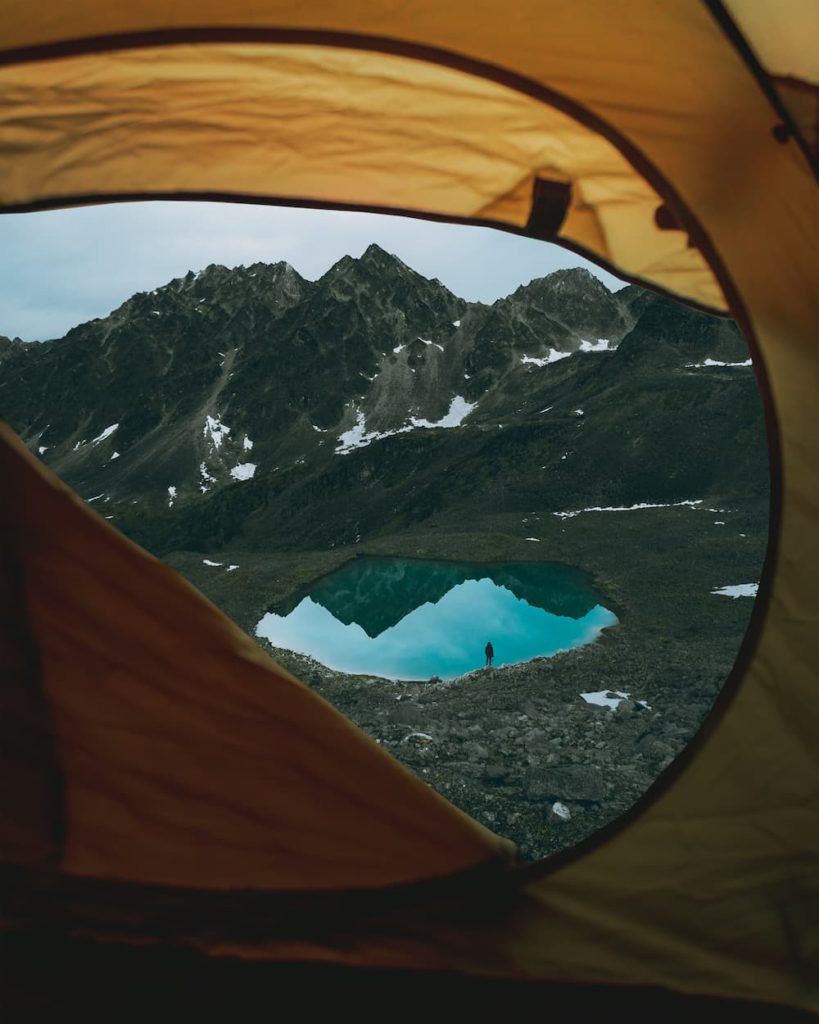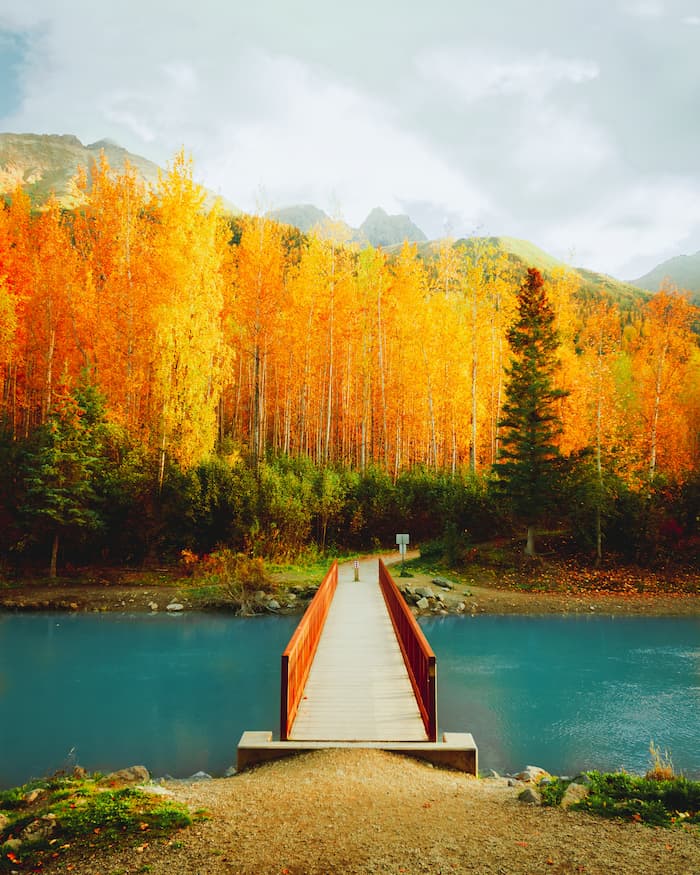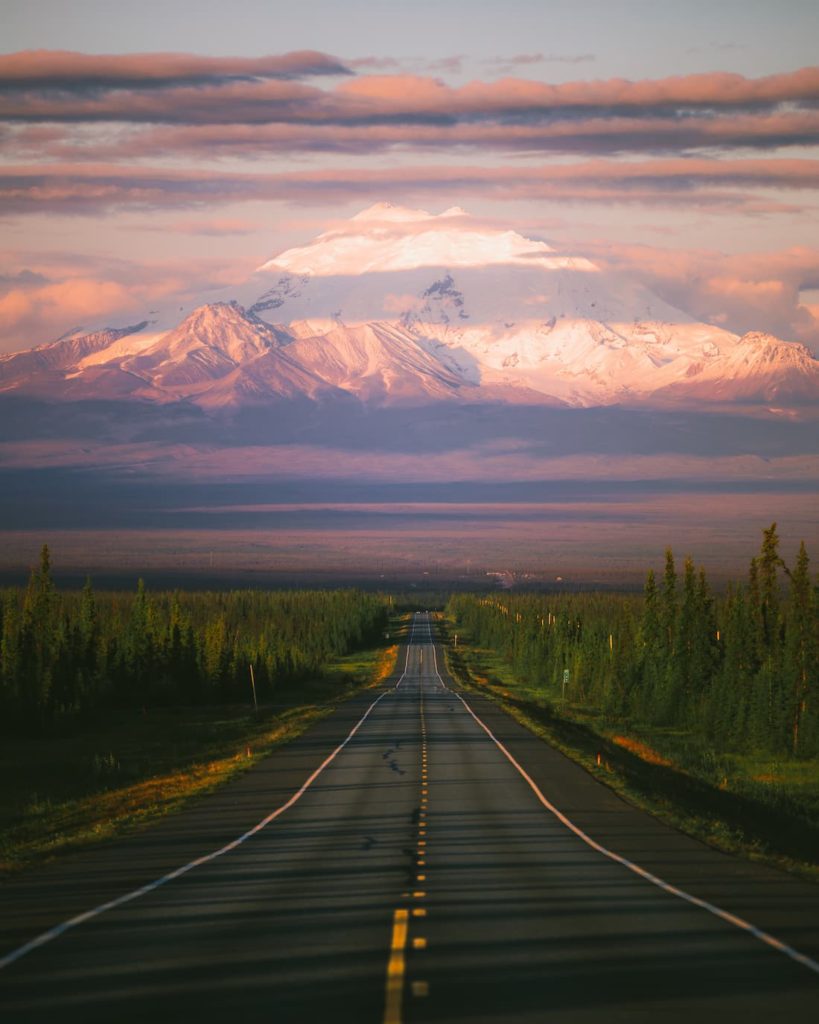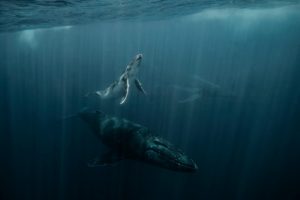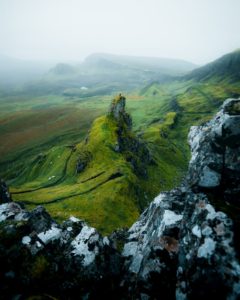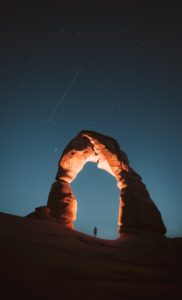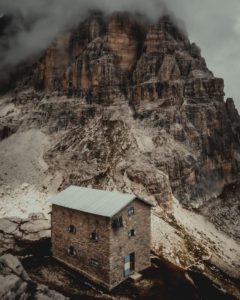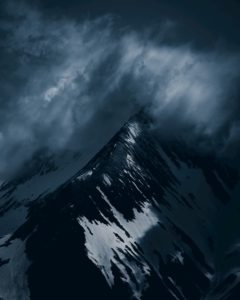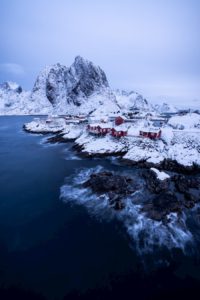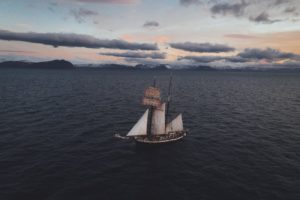
Patrick Thun
@patrickthunphoto
Landscape photographer based in the US
Introducing Patrick Thun
For many, Alaska remains this mysterious, cold part of the world that we don’t know much about. For Patrick, Alaska is his home, where he grew up, and the place where he fell in love with the art of photography. Later, he also began to do videography, and today he explores the country with an FPV, sharing his reels under the account @alaskareels and taking you with him on a flight over the Alaskan landscapes.
According to Patrick, Alaska is the best US state for photography. In the interview, he mentions several of his favorite spots, Eklutna Tailrace being one very close to him. Eagle River Nature Center, where his favorite trail to hike is, and Denali National Park, where he likes to go to capture both wildlife and mountains, are two other photography spots he recommends.
Most of all, though, roads are Patrick’s favorite subject: “…mainly because of the leading lines that bring the viewer into the photo. I would recommend the drive to Homer from Anchorage. You’ll end up passing the Kenai river which is super green.” Patrick mostly takes the car for his adventures, trying to find locations hardly anyone knows. He tells about one experience where he took off towards Glennallen to catch the sunset with Mt. Drum, in the winter. On this trip, he slept in the coldest he’d ever slept in (-30!), took one of his favorite photos to date, and then continued to Worthington Glacier (a must stop) and Valdez.
Patrick’s style is characterized by color: “I will edit a photo by bringing the highlights and taking whites down, especially on a photo with clouds. I usually set the saturation and vibrance to medium-high. Bright colors make a photo pop more in my opinion. In this regard, I use the Hue tab to make colors stand out a little bit more.”
Patrick found his style by playing with Lightroom and paying attention to the colors and tones he enjoyed most. This is also one of the tips he gave, in addition to “not comparing yourself to others” (very important!) and “just be happy with what you love doing!”
Below, you can learn more about his editing, favorite photography spots, most valuable experiences, and tips!
Interview
Welcome Patrick! About 6 years ago, you began sharing landscape photographs regularly on social media. Your progression has been wonderful! Nice to see that directly on your feed. Where does your passion for travel and photography come from? Maybe you can tell us a little bit about yourself?
My passion for travel came from always being outside as a kid. I used to play a lot in the woods or camp with my family. I would say I got into photography from watching my mom take photos. Then for one of my birthdays, I got a film camera and took photographs of random stuff from different perspectives, not knowing what I was doing.
When I joined the marine corps I bought my first DSLR, a Canon 7D. I began seeing photos on Instagram, and this inspired me. Though, I wasn’t taking many photos till I got out of the marines and was back in Alaska. After coming back to Alaska, my passion took off from the feedback I was receiving on Instagram.
The subjects I enjoy the most are roads, mainly because of the leading lines that bring the viewer into the photo.
"I love to travel to places no one has been to, and although some of my spots have been found, most are still hidden!"
You have captured so many unique moments in Alaska, Patrick. This is something that certainly called our attention, and I am sure a lot of people around the world are also curious about your adventures in such a unique region. So, what can you tell us about your home and the places you enjoy the most visiting? For someone visiting from abroad, which photo spots would you recommend them to visit and why?
In my opinion, Alaska is the best state to take photos. There are countless possibilities of wildlife showing up or weather conditions. There are multiple spots close to me that I like going to, such as the Eklutna Tailrace. The water is so blue and clear in winter and summer, like greenish-blue. It has a small bridge going across the water with a pioneering peak at the end of the waterway – and the pioneer peak is most of the time reflected in the water!
Kings Mountain is another favorite, and the pullout overlooks a river that flows towards the base of King’s Mountain. This spot is a favorite of mine in fall since the colors are always so vibrant.
I also need to mention the Eagle River Nature Center. There is a lot of wildlife to see, and there are multiple trails you can explore there. The Albert loop trail is my favorite one to hike as it’s just incredibly beautiful.
I also recommend going to Denali National park. I love the drive to Valdez from palmer. There’s so much to see, in terms of views as well as wildlife. Once in Valdez, you can watch the sea lions eat the salmon at the fish hatchery. On top of that, the mountains that surround Valdez are huge and make it all extra special.
The last thing I would recommend is the drive to Homer from Anchorage. You’ll end up passing the Kenai river which is super green. During the fishing season, lots of people are here shoulders to shoulders enjoying!
The Kenai Canyon is my preferred spot in the Kenai area. There are lots of pullouts and trails along the way to Homer!
I am sure you have experienced some incredible moments as well. To this day, which has been your most remarkable experience shooting outdoors? What made it so special to you?
One of my most remarkable experiences shooting outdoors was when I took off towards Glennallen to catch the sunset with Mt. Drum in the winter. I left Wasilla, headed to Palmer, and then from Palmer onward to Glennallen. It’s around 3 hours to get there, with short stops along the way.
The day was super cold, around -8 in Palmer, and by the time I got to Eureka, it was -30. The trees in the Eureka area were so frosted over and fluffy looking; that I spent some time photographing the trees and houses in the area. I ended up finding a little red barn that went perfect with the snow and blue sky.
After spending time in Eureka, I continued to Glennallen for sunset. I arrived at the spot where I wanted to catch a nice pink glow on Mt. Drum and the clouds, just in time before the sunset. I slept in my truck at -25 to -30 degrees. It was the coldest I ever slept in. I was so cold it was hurting my feet and toes. Luckily, my dog was with me, and we huddled up under the sleeping bag and other blankets. Around 4 a.m. I looked outside and could see the northern lights and the Milky Way. I took a panorama shot, and it’s still one of my favorite photos I’ve taken to date!
The following morning I tried Mt. Drum for sunrise, but that didn’t go so well. So I drove more into Glennallen to the gas station to fill up my truck and to get some munchies for the rest of the way to Valdez. One of the points I always stop at is Worthington Glacier. In the fall season, the colors are all so vibrant with the blues and white of the glacier. It’s a must-stop for great photos. Right after that is Thompson Pass, which gives you endless views of the valley going down into Valdez.
How do you decide on what are ‘perfect’ conditions in Alaska, and what is a ‘perfect’ photo for you? How far do you go for one shot, and how do you know whether something is realistic or not really?
When it’s partly cloudy, the mountains are visible and it is sunny – those are perfect conditions for me. I try not to go far for my shots, because of my lower back. So most of the photos I take are captured from my truck at pullouts. On occasion, I do small hikes to get a better view.
So far you have shared on social media almost 2000 images. Now, this may be a complicated question, but we would love to read your feedback: Could you share with us three photos you are proud of? Can you tell us why you select these photos specifically?
I chose these photos because they got my attention as I was going through my hard drive.
The first photo is of one of my favorite spots; King’s mountain. The colors are so vibrant! I especially love how there was a red bushy area for the foreground to pop and how the river leads you to explore the photo and all the other colors present.
I chose the second photo because of how perfect the weather was that day. The yellow tree, which stands out from the surroundings with the white-capped mountains in the Cantwell area in the back, just called for a photo!
The third photo makes me want it to be summer again so I can make a trip to Homer to see the super bloom of fireweed. It’s mind-blowing seeing it for the first time, but not less special every following time. It’s one of the many reasons I go to Homer.
We would love to know more about your artistic progression. What challenges did you face at the beginning and what are the challenges you face today with the genres you are shooting? Besides tons of practice, which resources/strategies did you use to get better at outdoor photography?
In the beginning, I focused on how to use the camera in manual mode. Figuring out how to use Lightroom to make my photos stand out from others was also important. Watching Youtube tutorials was quite helpful in this regard. These tutorials helped me figure out my editing style and find the colors and tones I enjoy the most.
From 2015 to now (2022) we can see an evolution in your editing style. Looking back in time, what do you think helped develop your style, Patrick? Could you share with our readers a before and after and explain briefly the basics of your editing process?
Getting inspired by seeing other people’s photos can help give you a different perspective. You can be inspired by certain colors/tones, whether that is in a photo, or looking at your surroundings.
In Lightroom, I will edit a photo by bringing the highlights and taking whites down, especially on a photo with clouds. I usually set the saturation and vibrance to medium-high. Bright colors make a photo pop more in my opinion. In this regard, I use the Hue tab to make colors stand out a little bit more.
Using the brush, I will set my sharpness to 100 and noise to -100. And then I brush over my subject. If I want to edit colors/tones, I will copy the settings from the photo and select another image, and paste the edit into the new photograph. At this point, I will do some tweaks to get the desired look I want on the next photo in my library.
Nowadays we see many young photographers pursuing a career as landscape photographers. What four pieces of advice would you like to share with them?
Four pieces of advice I could give are:
1) Don’t compare yourself to others
2) Shoot almost every day
3) Use Lightroom to find the desired look you’re looking for
To what extent do you think that photography can be a tool to teach kids about the importance of nature or can be used for wider educational purposes related to the conservation of our planet?
Photography can help teach kids how environments change over time, how delicate our world is, and what different species live in the rivers and outdoors.
It can also teach them to be respectful of nature and how to love the outdoors. I think patience is another thing photography can teach children.
What are your future plans and ambitions regarding nature/landscape photography? Where do you see yourself 5 years from now?
My plans and ambitions regarding photography would be to keep doing what I love; to capture the moments that won’t happen again and continue to share them with people who won’t get to see the moments in person.
In five years, I still see myself expanding my photography skills and sharing photos and videos with people who love doing the same as I do.
Would you like content like this sent to your inbox?
